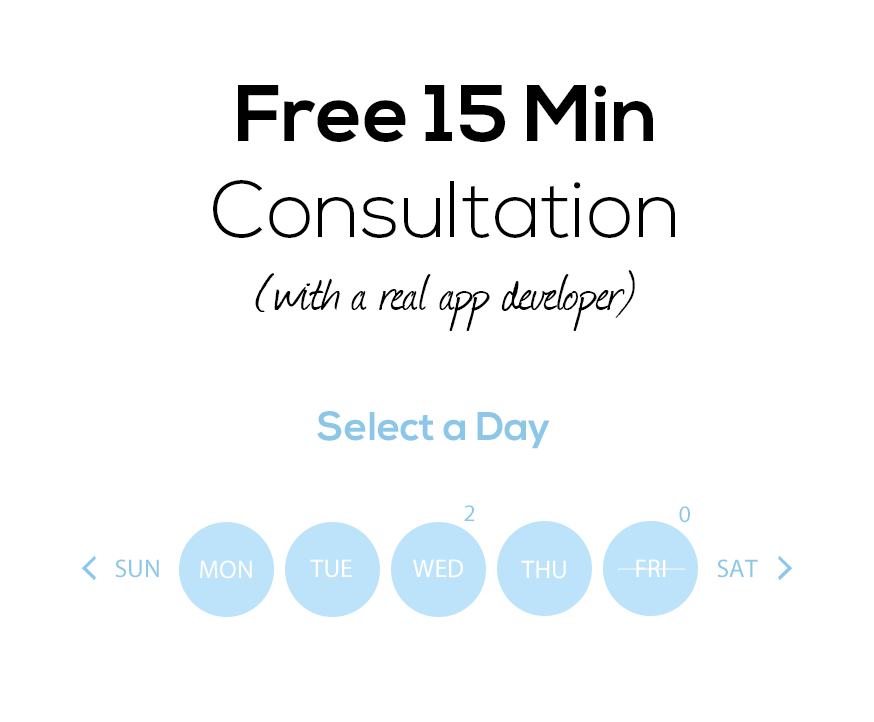Updated
Dec 22
2020
18 min read
Building a Mobile App Strategy – Identifying the Industry Needs

Creating a profitable and overall successful mobile app takes a whole lot more than a great idea.
Many entrepreneurs and mobile app developers want to take their vision for an app and hit the ground running, thinking quick development turnaround is the most effective plan, when in fact, the best approach is to take that idea, identify the industry needs, and craft a strategy before setting out.
If it seems like a daunting task, it’s actually not. Building a mobile app strategy isn’t as complicated as you may think, it just takes time and careful planning with your team.
Let’s take a look at the steps involved that can serve as a blueprint for your new mobile app.
But First…
Before moving on to establishing a strategy when building an app, there are a few pitfalls in thinking you should avoid.
A mobile app plan isn’t an extension of your online plan
It’s just one avenue for customers to quickly interact with your business and brand in an easy and convenient way.
The mobile app experience is there to enable your company and satisfy your users by helping them find what they need in a quick and efficient manner.
So when you’re thinking about your mobile app strategy, you have to also think about how all the different touchpoints you offer work together to meet the users’ needs.
If you look at a bank as an example, a bank has many touchpoints. They have a website, a mobile app, an ATM, a kiosk, a call center, and a branch users can visit.
Banks don’t use one strategy for all of these touchpoints since they each offer a unique experience and neither should you if you’re expanding to a mobile app.
Mobile app development rarely uses the same tech stack as a website, which is why it’s important that your team of developers also have mobile app coding experience. If not, it’s time to add mobile app developers to your team.
Creating a mobile app is a significant investment and hiring the right people for the job is crucial.
Don’t leave such an important task in the hands of developers who may not have the development expertise involved in building an app.
Now let’s take a look at steps every business needs to take in order to put together the best mobile app strategy.
What’s your company’s overall strategy and needs? Everyone on your team, including designers and developers, should have a complete understanding of what the company mission and strategy is before moving on to a mobile app strategy.
A part of defining your business needs involves outlining where your business is right now, where it plans to go, and what it needs to get there. Here are a few questions to ask yourself:
What will a mobile app do for your company?
How will it benefit the business?
Will it introduce something new?
Will it work to facilitate or advance your current processes?
Is it going to be most useful for customers or employees?
No matter what your mobile app is intended for, it should ideally offer something that’s innovative and different so users will find it as a convenient and helpful tool.
If it’s not easy to use, your users will go back to the desktop website or a competitor.
When setting out to build a mobile app, one of the first questions you want to ask is, who am I competing with?
Unless your app is revolutionary, there’s going to be competition. Careful analysis and even documentation of the competition is a part of building a strategy.
Seeing what works and what doesn’t quite work with their app will help your own team determine what the market baseline is before building a top mobile app.
- You’ll be able to quickly identify a common set of features and functionalities their app has and that yours should also offer based on user expectations. For example, social media apps—Snapchat, Instagram, Facebook—they all allow users to add fun filters to their photos because that’s now a feature users expect.
- You’ll be able to discover what competitor’s apps are lacking and work to improve on them for your app.
- In analyzing the competition, you’ll also be able to see what they aren’t offering users. This is where your app can really stand out and bring something new to the table
While you should be conducting competitive analysis throughout the lifecycle of your mobile app’s development, it needs to begin at the idea stage, before development begins.
This is the phase in your project where you can determine if there’s a market for your app and what it looks like. What does your app offer that the competition doesn’t? What’s it’s value?
Since new apps come and go, you want to continue analyzing the competition to stay up to date on not only what these other apps are up to, but how the market looks since it’s ever-changing.
Think about the strengths, weaknesses, opportunities, and threats (SWOT) involved in building your mobile app.
A SWOT analysis is an exercise that can help your team define and overcome the challenges you may face and which can affect the success of your app.
These are some questions you’ll want to ask yourself:
- What are the advantages your company has?
- What do you do well and where do you really shine?
- What makes your app unique and better than competitors?
- What improvements can be made?
- What parts of your app can be discarded?
- Where are there vulnerabilities?
- Where do you see opportunities?
- Will you have the funding you need?
- Are there any outside factors that may affect the financial viability of your app?
- Is there anything that may prevent progress?
Asking these kinds of questions and taking your time in answering them will take you through and understand what the strengths and weaknesses of your app are, where there are opportunities, and where there are threats.
It will give you the self-awareness necessary to consider all of the factors that can have an impact on your app’s strategy.
Step 4: Know your target audience
You probably already have an idea who your target audience will be, but it’s important to have a greater understanding of the people who will be using your app.
Users will have varying expectations, so you want to make sure your app fulfills most of them.
With that said, you can’t make everyone happy, and cramming your app with every feature and functionality you can think of to please users is a bad idea.
Conduct research to really dive in and see what your audience needs and wants, and how your mobile app could deliver it to them and solve those problems.
Now that you have a greater understanding of what your app is and who it’s for, the next step in your strategy is to select the best platform for developing it.
There are multiple operating systems for mobile apps, with iOS and Android being the largest, so whichever one you choose should be able to support the features and functionalities you want your app to have.
Once again, you’ll want to consider your target audience to help determine which platform they’re more likely to use.
If you have the time and resources, you can also develop your app on multiple operating systems for a wider reach.
Another major factor in app development is selecting a tech stack. Work closely with your developers to ensure that the technology that’s planned to be used is in line with the goals of the app.
You’ll want to consider things like network readiness, security solution, support and maintenance costs, devices, and more.
Using the right tech stack for your project is important and will ensure your app performs seamlessly.
At this point, your mobile app idea should be clearly defined. You should by now have a list of features and functionalities you want to implement.
You’ve analyzed the competition to see what they’re doing right and where they could improve. You’ve looked at your own app’s potential pitfalls and threats. You’ve done your research!
The next step in your mobile app strategy is to create a roadmap that breaks down all of your ideas and notes into smaller components that can be executed. Think of it as a project plan and a timeline for deliverables or sprints.
Step 7: Establish a budget
At this point, you should create and document what the budget needed is to deliver on your mobile app strategy. You’ll also want to consider the resources available to you.
There are typically two types of expenses: operating expenses and capital expenses. The biggest expense will be the team you hire to help launch your app.
Expenses should decrease over time, however, as work becomes more focused on updating and optimizing the app.
What budget you have will be a big factor in how fast you can deliver the MVP as well.
Mobile app development begins with an idea. This step is about thinking carefully about what it will take to deliver on that idea.
At this point, your team should clearly lay out the plan and define all the moving parts that will come together to create the final product.
Don’t clutter your app with too many features. Focus on the most essential features you want for your MVP so that it’s easy to use and appealing for users
You can begin by making a list of the features and functionalities your application will have, followed by creating specific use cases.
Testing should always be a fundamental component of a mobile app strategy and needs to be conducted through every phase of your app, not just at the end.
Once you’ve created your timeline and roadmap, you can begin testing after each sprint is completed.
It’s inevitable that bugs will make their way to production, but implementing a strong testing strategy before starting development will help minimize big issues that can emerge later.
A part of this strategy is asking if your business plans on investing in testing automation tools that have the ability to run in your production and QA environments.
Having a plan from the beginning will make the process more streamlined and easier for everyone.
It’s an amazing feeling once your mobile app has finally launched into the world, but the work doesn’t end there.
You have to be ready to handle post-production testing, handling bugs/issues/defects that can and will occur, version control of the app, and more.
This is why it’s important to think about your post-production support as part of your mobile app strategy.
There are simply loads of details that are involved in production support ownership so have this clearly defined and documented from the beginning.
Final Thoughts
As you’ve seen by reading this article, there’s plenty of thought that can and should go into building a mobile app strategy, but doing so will ensure that you’re on the right track when development starts.
It will also help your team feel empowered and confident in the direction your company is taking on developing a new app.
Coming up with a clear mobile app strategy can take weeks, even months. But taking your time to engage in things like competition analysis, SWOT exercises, and understanding the target audience will all help you create a successful app.



Your inbox wants some love.

Stay informed with Webiotic latest
Stay informed with Webiotic latest


